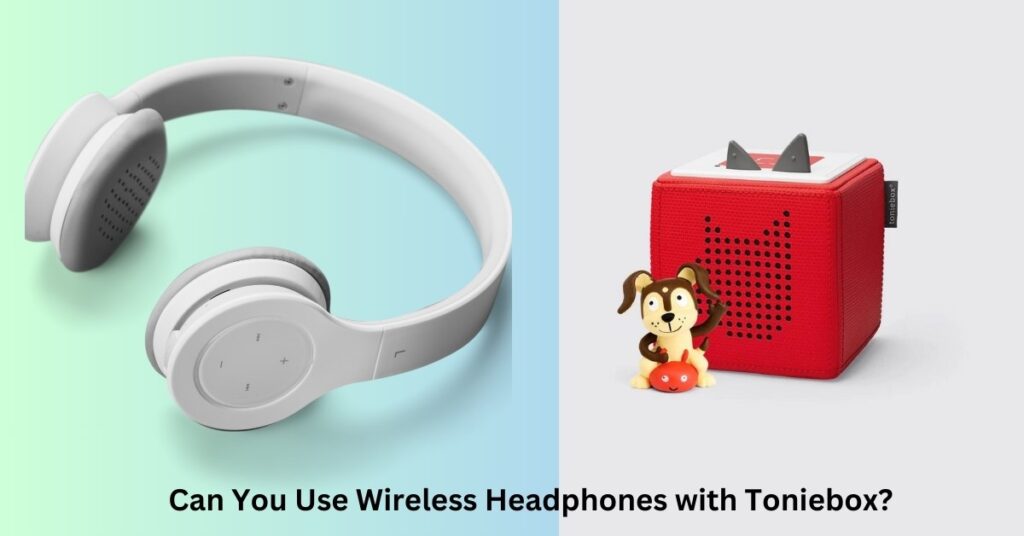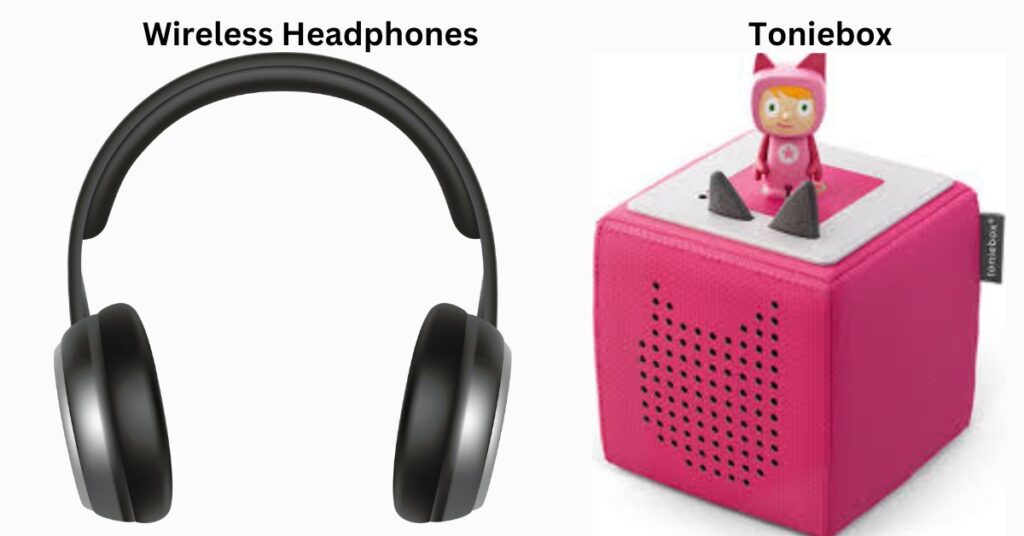In recent years, the Toniebox has emerged as a must-have gadget for children and parents alike. Its charm lies in its simple and interactive storytelling system, utilizing figurines called Tonies to play audio content ranging from stories to music. As the usage of wireless devices continues to surge, many parents are curious about integrating wireless headphones into their child’s Toniebox experience. This blog will discuss the possibility and practicality of using wireless headphones with the Toniebox, exploring various methods and considerations.

Understanding the Toniebox
Overview of the Toniebox
The Toniebox is a screen-free digital listening device designed specifically for children. Its central appeal lies in its simplicity and intuitive use. To start listening, children place a Tonie (a small, hand-painted figurine) on top of the Toniebox. Each Tonie contains a chip that the Toniebox reads, allowing it to play pre-recorded stories, music, or educational content. The device is robustly built, with soft, padded edges that make it resilient to the inevitable drops and bumps it will encounter in the hands of young children.
Connectivity Options
The Toniebox features built-in speakers that deliver clear audio for the immediate surroundings. However, it needs a dedicated headphone jack, making it more straightforward to connect traditional headphones. This absence also extends to wireless connectivity, as the Toniebox does not have native Bluetooth capabilities. Consequently, parents interested in using wireless headphones must explore third-party solutions and workarounds.
The Case for Wireless Headphones
Advantages of Wireless Headphones
Using wireless headphones has several notable benefits, particularly for children. Here are a few reasons why parents might opt for wireless headphones:
- Freedom of Movement: Wireless headphones eliminate the need for physical cables, allowing children to move about freely without the risk of getting tangled or yanking the Toniebox off a table.
- Durability: The absence of wires minimizes wear and tear, which is especially crucial given how rough children can be with their belongings.
- Volume Limiting: Many wireless headphones for children have volume-limiting features to protect young ears from excessive volume levels.
Technical Compatibility
To use wireless headphones, one typically needs a device with Bluetooth capabilities. Since the Toniebox does not feature Bluetooth, exploring alternative methods to bridge the technology gap between the Toniebox and wireless headphones becomes necessary.
Existing Solutions and Workarounds
Initial Limitation
The Toniebox’s intrinsic limitation is its lack of native support for wireless technology. It can be a setback for parents who want the convenience of wireless headphones. However, thanks to some ingenious workarounds, it is a manageable problem.
Possible Workarounds
Bluetooth Transmitter
A commonly adopted solution is using a Bluetooth transmitter. This device can be linked to the Toniebox’s audio output, enabling it to transmit audio signals to wireless headphones.
Steps to Connect a Bluetooth Transmitter:
- Purchase a Bluetooth Transmitter: Ensure it is compatible with your wireless headphones.
- Connect the Transmitter to the Toniebox: Since the Toniebox doesn’t have a headphone jack, you will need an adapter that can interface with the audio output. Connect this adapter to the line-out port of the Toniebox, and then plug the Bluetooth transmitter into the adapter.
- Pair the Transmitter with the headphones: Initiate pairing mode for the Transmitter and the wireless headphones. Once paired, the audio from the Toniebox will be played through the wireless headphones.
Third-Party Accessories
Third-party accessories are designed to provide wireless capabilities to devices that lack them. While less straightforward than Bluetooth transmitters, these accessories can offer additional functionalities and improved user experiences.
Example of Third-Party Accessories:
- Audio Adapter Kits: These kits typically include adapters and cables to connect a Bluetooth transmitter to the Toniebox.
Pros and Cons
Pros of Using Workarounds
- Wireless Freedom: Children can move around without restrictions, making the listening experience more comfortable and enjoyable.
- Enhanced Experience: Parents and children alike may find the convenience of wireless headphones to be a significant improvement over wired alternatives.
- Versatility: Wireless headphones can be used with multiple devices, not just the Toniebox.
Cons to Consider
- Additional Costs: Purchasing a Bluetooth transmitter and necessary adapters can add to the overall cost.
- Battery Management: Both the Bluetooth transmitter and wireless headphones require regular charging, adding another layer of complexity.
- Latency Issues: Some Bluetooth transmitters may introduce a slight delay between the audio output and the audio received by the headphones, which can be problematic for time-sensitive content.

Future Outlook
Technological Advancements
As technology advances, future iterations of the Toniebox could include built-in Bluetooth support. That would eliminate the need for third-party solutions and facilitate a seamless integration with wireless headphones.
Market Trends
Consumer demand for wireless compatibility will likely influence the market, encouraging manufacturers to develop products that meet these needs. Companies might start offering wireless headphones explicitly designed for the Toniebox, further simplifying the process for parents and caregivers.
Conclusion
In summary, while the Toniebox does not currently offer support for native wireless headphones, practical workarounds are available. A Bluetooth transmitter or other third-party accessories can enable wireless headphones, providing greater convenience and an improved user experience. Although there are additional costs and considerations, the benefits often outweigh the drawbacks, particularly for parents seeking a tangle-free and child-friendly listening solution.
As technology evolves, we can anticipate further enhancements that will make integrating wireless headphones with devices like the Toniebox even more straightforward. Until then, these solutions offer a viable path forward for parents looking to blend the magic of the Toniebox with the convenience of wireless audio.
Call to Action
Have you tried using wireless headphones with the Toniebox? What solutions have worked for you? Please share your experiences in the comments below and help fellow parents find the best ways to enhance their children’s audio experiences. Consider sharing this blog with friends and family who might find it useful!
